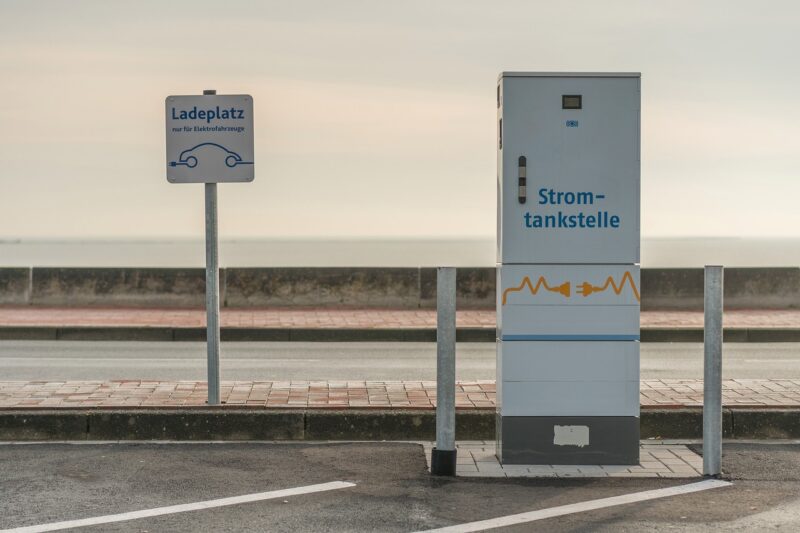
The shift towards electric vehicles (EVs) is becoming increasingly vital in the fight against climate change and energy dependency. However, as the adoption of EVs grows, so too must our understanding of the energy sources that power them. To truly mitigate the environmental impact of electric vehicles, we need to pair them with renewable energy sources like solar, wind, and hydroelectric power. This article explores the intersection of renewable energy and electric vehicles, discussing benefits, challenges, and future prospects.
1. Understanding Electric Vehicles and Their Energy Needs
Electric vehicles are powered by electric motors, which receive energy from rechargeable batteries. The energy is typically sourced from grids, which can be powered by various means, including fossil fuels and renewable resources. This dependence on the grid raises concerns about the carbon footprint of EVs, particularly if the electricity comes from non-renewable sources. With the average EV consuming about 30 kilowatt-hours (kWh) per 100 miles, transitioning to greener energy production is crucial for maximizing the environmental benefits of electric vehicles.
2. The Importance of Renewable Energy
Renewable energy sources provide several advantages, including:
- Reduced Carbon Emissions: Utilizing renewable sources lowers greenhouse gas emissions, making EVs even more eco-friendly.
- Energy Independence: Renewable energy harnessed locally reduces dependence on imported fossil fuels, enhancing national security.
- Sustainable Development: Investing in renewable technologies promotes job creation in green industries, enhancing economic resilience.
As more countries commit to reducing carbon emissions, the role of renewable energy becomes critical. For instance, integrating solar energy with residential EV charging stations allows homeowners to power their vehicles with energy produced on-site. This not only decreases reliance on the grid but also significantly lowers overall energy costs.
3. Solar Power: A Perfect Match for Electric Vehicles
Solar energy is a popular renewable option due to its ubiquity and decreasing costs. Here’s how solar energy can effectively power electric vehicles:
- Home Charging Stations: Homeowners can install solar panels to generate their own electricity, thereby charging their EVs with clean energy.
- Solar-Powered Charging Stations: Public charging stations equipped with solar panels allow for the generation of renewable electricity right where EV owners need it, promoting the use of electric vehicles.
- Grid Stability: As solar energy becomes prevalent, it can help stabilize the grid during peak demand times, which is essential for reliably powering electric vehicles.
The integration of solar power with electric vehicles not only supports a reduction in carbon emissions but also fosters a culture of sustainability.
4. Wind Power: Fueling the Future of Electric Mobility
Wind energy is another prominent renewable source that can bring significant benefits to the electric vehicle sector:
- Large-Scale Energy Generation: Wind farms can produce vast amounts of energy, which can be directed towards EV charging stations, supporting the infrastructure around electric mobility.
- Reducing Strain on Conventional Energy Sources: Wind energy can reduce the need for fossil-fuel-based energy during peak EV charging times, lowering overall emissions and costs.
- Hybrid Renewable Solutions: Combining wind with solar energy can create a more reliable and constant source of power, ensuring that electric vehicles are charged sustainably, regardless of weather conditions.
Wind energy plays a critical role in the global transition to green energy systems and serves as an excellent complement to the growth of electric vehicles.
5. Policy Support for Renewable Energy and EV Infrastructure
Government policies are crucial in facilitating the integration of renewable energy into the electric vehicle ecosystem. Here are key measures that can create a driving force for change:
- Incentives for Renewable Energy Use: This includes subsidies for solar panel installations and tax breaks for home charging stations powered by renewable energy.
- Investment in Charging Infrastructure: Governments can allocate funds to develop public charging stations with a focus on utilizing renewable energy sources.
- R&D Funding for Battery Technology: Investing in research and development for better battery efficiency can help increase the usage of renewable power, making electric vehicles more practical and efficient.
Policymakers must work alongside industry leaders to create a comprehensive strategy for integrating renewable sources with electric mobility.
6. The Future: Integration and Innovation
Looking ahead, the integration of renewable energy and electric vehicles looks promising due to technological advancements and evolving market dynamics:
- Smart Grids: The development of smart grid technology allows for better management of energy supply and demand, ensuring efficient use of renewable energy for electric vehicle charging.
- Vehicle-to-Grid Technology: This innovation allows EVs to return energy to the grid, further optimizing energy management during peak times and enhancing energy flow.
- Decentralized Energy Systems: Community-based energy solutions encourage local energy production and consumption, which supports both EV and renewable infrastructure.
These innovations emphasize the potential for a clean energy future, where electric vehicles and renewable sources work harmoniously.
Conclusion
The role of renewable energy in powering electric vehicles is not just a solution for energy sustainability—it’s a necessity for combating climate change and creating a better future. By leveraging solar, wind, and other renewable sources, we can enhance the environmental benefits of electric vehicles while contributing to a resilient, stable energy economy. The potential is vast, and with strategic policies, community engagement, and technological advancement, we can pave the way toward a sustainable transportation future where electric vehicles thrive on renewable energy.
As we make the transition to greener forms of energy, it is crucial for individuals, corporations, and governments to collaborate towards integrating renewable energy into the electric vehicle landscape. Together, we can drive the change necessary for a cleaner, more sustainable planet.







